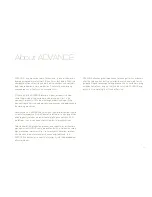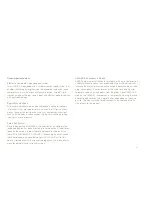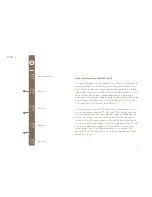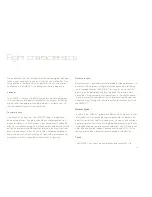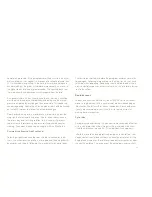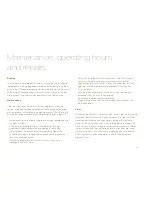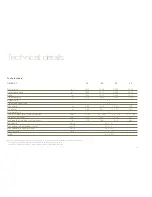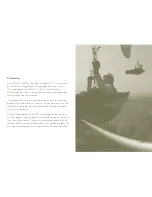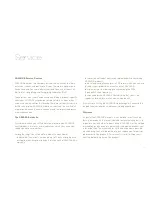
43
Example: Initial acceleration position with 18.5 km/h headwind
or
1.9 m/s air mass sink rate
or
an expected rise of 0.9 m/s
(see in the illustration).
If headwind, air mass sink rate and expected rise are considered in
combination, then the acceleration position must be selected through
a slightly overproportional cumulation of the acceleration distance
due to the non-linear form of the polar curve.
Example: If the headwind is 18.5 km/h and the sink rate is 1.9 m/s,
then acceleration must be slightly faster the second acceleration
position on the SPI
(see in the illustration).
If an expected rise
of 0.9 m/s is considered in addition, then acceleration must be
clearly faster the third acceleration position
(see in the illustra-
tion).
To get a better feel for the polar curve and these overproportional
combinations, various fl ight situations can be calculated and repre-
sented using a simulator at www.advance.ch under OMEGA 7.
Suitable harnesses
The ADVANCE OMEGA 7 is certifi ed for harnesses in group GH
(without rigid cross-bracing - see the «Certifi cation» section). The
suspension points of the chosen harness should ideally have a dis-
tance of 40 to 45 cm as well as a height of 40 to 46 cm.
The OMEGA 7 is neither suitable nor approved for harnesses in the
GX group (with active cross-bracing). The use of this type of harness
may have a detrimental effect on the handling and extreme fl ight cha-
racteristics.
The ADVANCE OMEGA 7 was specially trimmed for the use of an
aerodynamically optimised harness. For this reason, we recommend
the use of a harness with an aerodynamic leg bag in order to exploit
the OMEGA 7’s huge performance potential to the full. The ADVANCE
IMPRESS harness is particularly suitable since the OMEGA 7 was
designed and tested with it in mind.
Weight range
The weight ranges for the different sizes are listed in the «Techni-
cal data» section. The fi gures given there refer to the total take-off
weight. This includes the pilot’s body weight including clothing, as
well as the weight of all the equipment (paraglider, harness, instru-
ments, etc.). Flying at the lower or upper weight limit may infl uence
the glider’s fl ying characteristics but this will not have a detrimental
effect on pilot safety.
1
2
3
Handbuch OMEGA 7.indd 43
Handbuch OMEGA 7.indd 43
01.09.2006 12:34:41 Uhr
01.09.2006 12:34:41 Uhr
Summary of Contents for Omega 7
Page 4: ...4 Handbuch OMEGA 7 indd 4 Handbuch OMEGA 7 indd 4 01 09 2006 12 34 27 01 09 2006 12 34 27...
Page 31: ...31 Handbuch OMEGA 7 indd 31 Handbuch OMEGA 7 indd 31 01 09 2006 12 34 37 01 09 2006 12 34 37...
Page 32: ...32 Handbuch OMEGA 7 indd 32 Handbuch OMEGA 7 indd 32 01 09 2006 12 34 37 01 09 2006 12 34 37...
Page 57: ...57 Handbuch OMEGA 7 indd 57 Handbuch OMEGA 7 indd 57 01 09 2006 12 34 45 01 09 2006 12 34 45...
Page 58: ...58 Handbuch OMEGA 7 indd 58 Handbuch OMEGA 7 indd 58 01 09 2006 12 34 45 01 09 2006 12 34 45...
Page 85: ...85 Handbuch OMEGA 7 indd 85 Handbuch OMEGA 7 indd 85 01 09 2006 12 34 57 01 09 2006 12 34 57...







